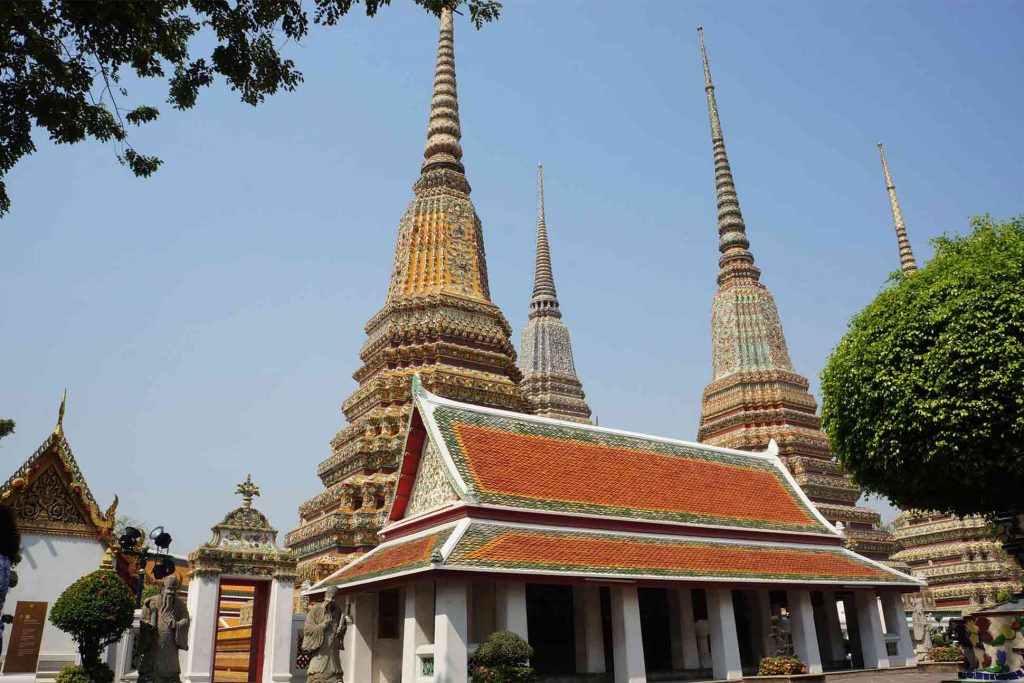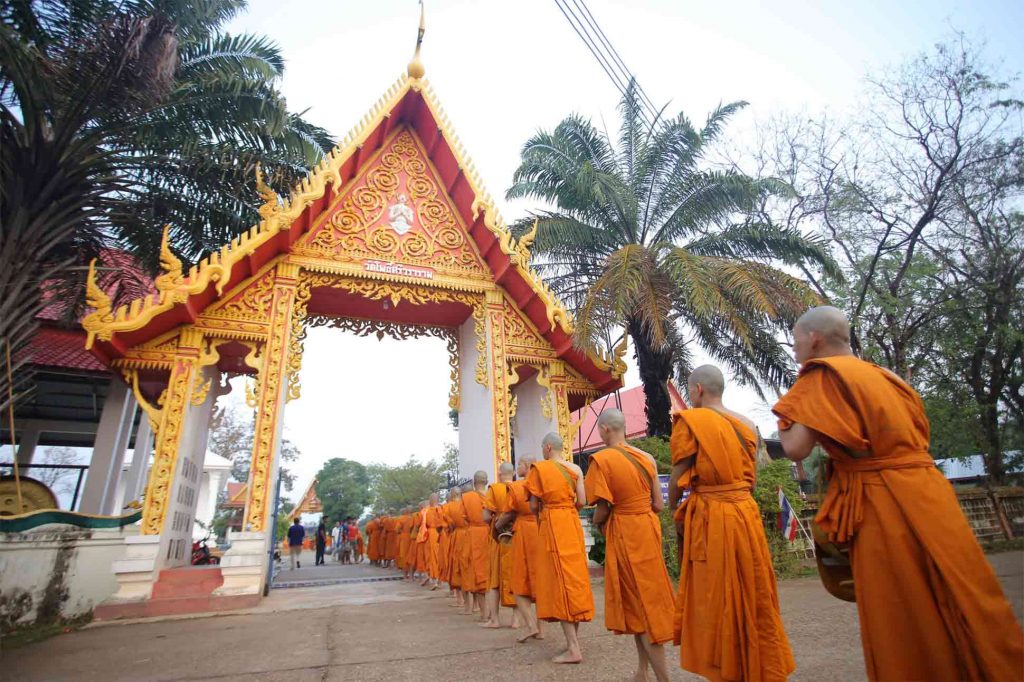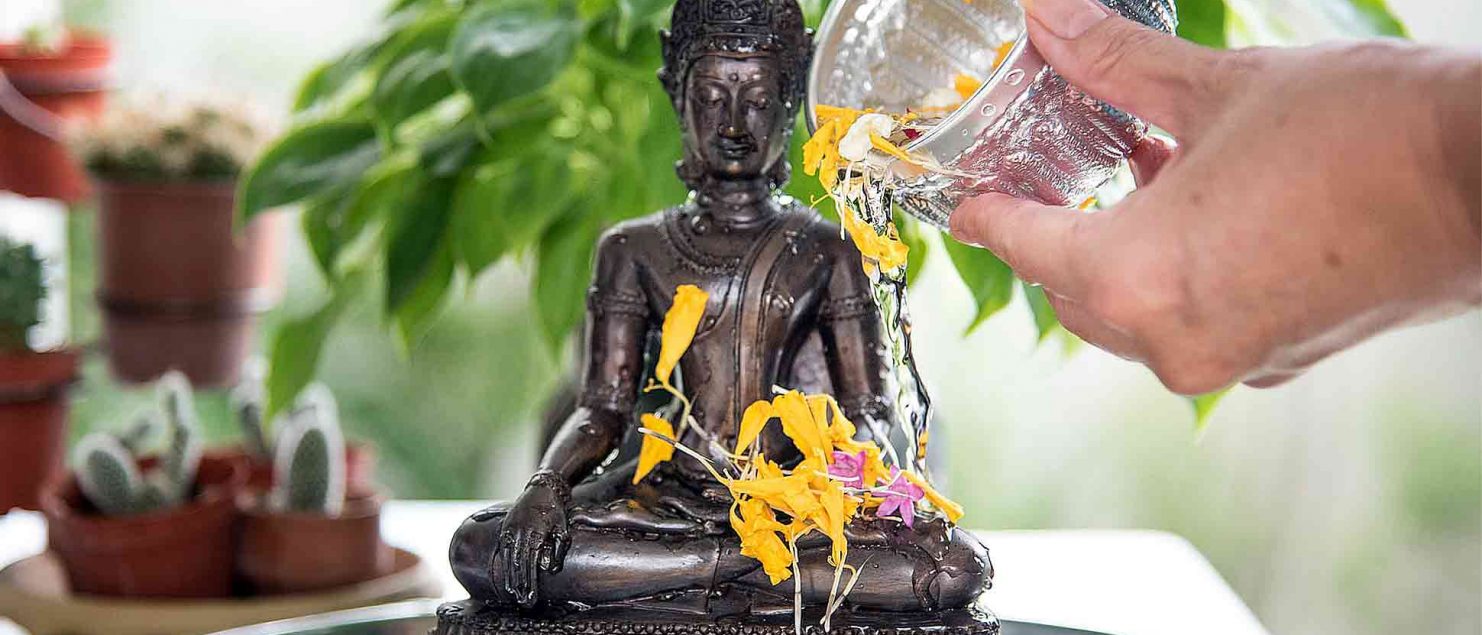Songkran in Thailand – the ultimate guide to understanding the Kingdom’s New Year’s Celebrations
Among the world’s most fun and exuberant New Year’s celebrations, Songkran in Thailand is a festival for the senses and an experience to make memories that last a lifetime. The national holiday is celebrated each 13 April and followed by joyful festivities that last two days and span the entire Kingdom, from the northern city of Chiang Rai to Koh Lipe deep in the country’s south.
For years, Songkran has attracted travellers – including countless LGBT+ visitors – in search of a fun-filled spectacle or spiritual contemplation: because depending on how you celebrate the Thai New Year, it lends itself to either! Read on for a glimpse into the true meaning of the festival.
How did Songkran originate?

The word Songkran is derived from the Sanskrit word ‘samkrãnti’, meaning ‘passage’ or ‘transformation’. It refers to the rising of Aries on the astrological chart – an event that rings in the New Year in calendars across Asia. But Songkran is rooted deep within Buddhist and Hindu mythology, too: according to legend, the deity Phra Phrom (or Kadilla Brahmã) was forced to decapitate himself after losing a bet with a child. To avoid bringing a lethal inferno upon the world, his four-faced head was collected by the God’s seven daughters, representing the seven days of a week, who carry it on a tray around Mount Meru, the mythological centre of the Buddhist and Hindu universe. The ritual, which symbolises the sun moving from one zodiac to another, become known as ‘samkrãnti’ or ‘Songkran’ over time.
How is Songkran celebrated?

Songkran in Thailand has many different expressions, some of which are more or less adhered to across the country. For instance, it’s tradition for the locals to make merits at a Buddhist temple. This can involve giving alms to the monks or donating objects or construction materials to help with restoration efforts. On the islands, there’s also a tendency to refrain from any kinds of labour – other than cleaning the house – and to avoid hurting others, including animals. Meanwhile, Northern Thailand puts on spectacular processions involving performances and traditional costumes, and the lesser-visited eastern provinces build pagodas from sand and mud! Then, there’s the water-throwing, perhaps the best-known association to the holiday among tourists. Although this ritual is embraced throughout the Kingdom, there are varying degrees of how wild of a ride it gets: in Bangkok, where entire districts are closed to traffic, the ‘water festival’ is celebrated by thousands of party-goers day and night!
What should I consider before joining the festivities?

Everyone is welcome to join in on the immense fun that is Songkran in Thailand. Those, who want to tick an epic water battle in the gay corners of Silom or Khao San Road off their bucket list should remember not to bring any electronics, or to store them safely in water-proof bags. While splashing water is arguably a must, rowdy behaviour or drunkenness are not welcome: remember, Songkran remains a meaningful celebration at its heart, and Thais genuinely consider the water battle a communal washing away of past sins, negative energy and bad luck. As much as Songkran is perhaps the world’s most fun purification ritual, it also offers a chance to immerse yourself in the Kingdom’s age-old culture and beliefs, and a visit or two to a temple, to make a small offering or sit in peace with meditating monks, is a respectful and unforgettable way to honour an ancient tradition and give back to those who keep it alive.

